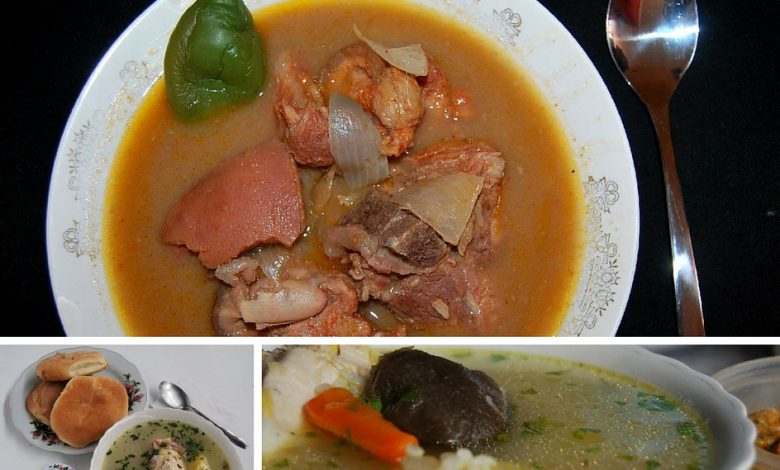The Marvelous and Particular Breakfast of Cusco

A breakfast in Cusco is special. For the people of Cusco who are traditional and aware, the first food of the day is not a cup of milk with quinoa nor a cheese sandwich (what we call a pan con queso) with juice.
The true breakfast is a main dish. It is a good Cusco-style adobo or a great chicken soup. They are perfect for starting your day. Both dishes are very traditional in Cusco and on eating them you experience a celebration.
Adobo Cusqueño (Cusco-Style Adobo)

A concentrated broth, reddish in color, spicy and enchanting, decorated with a red rocoto pepper that enlivens the dish even more, that is a Cusco-style adobo. Accompanied with a couple of small breads (rolls) called Oropesa bread, the dish becomes the best breakfast you can eat in Cusco.
It is one of the emblematic dishes of our city and region that is often consumed for breakfast. A Cusqueño has breakfast between 9 and ten in the morning. For many people the best adobo is one you have at home and with your family surrounded by the sounds of conversation and daily life. For other people the best is on a huarique, a humble place that steals you heart through your palate.

The spiciness of the rocoto makes you blow over your mouth, one time after another. Still you continue eating the concentrated soup. You break off a piece of bread and sip more soup. Your palate shouts “what a delight!”. Your tear off a piece of tender pork with your knife and fork and then eat it with pieces of onion from the broth. You feel an explosion of flavor,a party in your mouth.
The fusion of ingredients makes this dish one of the best we have in Cusco: pieces of pork, rocoto, chicha, onions, red ají (panca), and finally Oropesa bread form the district of the same name known formally as the bread city of our region.
Into the morning, fresh with a chill and a soft breeze, people walk towards the Pampa del Castillo Street, part of Cusco’s colonial core. The streets along the way pass by Inca stone foundations and, occasionally, walls. There are ancient, colonial houses with attractive balconies painted blue and brown. There are enormous doors with ancient carving along the whole way. The restaurants on this street are specialists in preparing this wondrous and mush desired dish. On their doors you will see a sign of the dishes they offer, and on the floor a pot with rue flowers to bring in clients. Without doubt this street is recommended if you wish to try a good adobo for breakfast.
Caldo de Gallina

Did you know that chicken soup is one of the most sought after breakfasts for when the people of Cusco wake up and cold has settled over us?
This soup is one of the most typical plates of Peruvian gastronomy. It is made throughout our country, especially on chilly mornings. You can find it in the traditional markets and in the popular restaurants of our city. This famous caldo de gallina, chicken soup is made in the cost, the highlands, and in the jungle.
The art that our cooks show in making up this soup varies according to the taste of their clients. There are places where it is made with noodles or rice. In the Creole soup shops of Cusco you will be served up a big, deep bowl of broth along with a piece of farm raised chicken, potato, hard boiled egg, minced green onions, bread and a slice of lime to add more flavor to the soup, if you wish.
In our traditional markets it will also include, as is typical int eh highlands, moraya (white chuño or freeze-dried potato) yuca, garbanzo beans, and instead of bread you will get a portion of toasted corn.
The people of Cusco often prefer to have a good chicken soup to begin their day with energy. This concentrated soup from our highlands is always accompanied by its uchucuta, fresh ground hot sauce.




